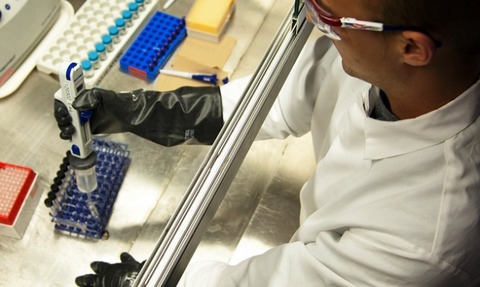Scientists map "most important" protein
21 Jul 2014

Understanding the secondary structure of the anaphase-promoting complex (APC/C) could lead to the development of new cancer drugs.
A team of scientists from The Institute of Cancer Research (ICR) has used a combination of electron microscopy and imaging software to reveal the structure of one of the most important and complicated proteins in cell division, according to new research published yesterday in the journal Nature.
According to the ICR team, the high-resolution images will be used to transform scientists’ understanding of exactly how cells copy their chromosomes and divide, and could reveal binding sites for future cancer drugs.
“The new study is a major step forward in our understanding of cell division
ICR chief executive Paul Workman
Lead researcher David Barford said: “It’s very rewarding to finally tie down the detailed structure of this important protein, which is both one of the most important and most complicated found in all of nature.
“We hope our discovery will open up whole new avenues of research that increase our understanding of the process of mitosis, and ultimately lead to the discovery of new cancer drugs.”
The APC/C performs a wide range of vital tasks associated with mitosis, the process during which a cell copies its chromosomes and pulls them apart into two separate cells.
As part of the study, researchers reconstituted human APC/C to visualise it at a resolution of less than a billionth of a metre.
According to the research, the resolution was so fine that it allowed the team to see the secondary structure - the set of basic building blocks which combine to form every protein.
Using combined imaging techniques, the alpha-helix rods and folded beta-sheet constructions were visible within the 20 subunits of the APC/C, defining the overall architecture of the complex, research suggests.
“The fantastic insights into molecular structure provided by this study are a vivid illustration of the critical role played by fundamental cell biology in cancer research,” said interim chief executive of the ICR Paul Workman.
“The new study is a major step forward in our understanding of cell division. Understanding exactly how cancer cells divide inappropriately is crucial to the discovery of innovative cancer treatments to improve outcomes for cancer patients,” Workman added.

